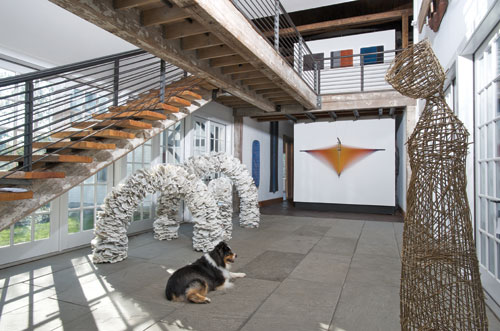
Our first online exhibit, the10th Wave III: Online, opens today. The exhibit is a carefully curated selection of works presented in installation shots, images of individual works and detail photos. Approximating the in-person experience, viewers can “walk” through 26 images of the exhibit installed; click to view each of the 125 works in the show more closely, focus in on images of dozen of details and click to read more about each of the artists in the exhibition. “Images of individual works of art online are commonplace,” says Tom Grotta, president of browngrotta arts. “We have tried, instead, to give viewers a sense of the work in space, combined with the option of looking more closely at the pieces that interest them, just as they would have if they were visiting the exhibit in person.”
The artists in the 10th Wave III are experimenting with forms and techniques in novel and surprising ways, exploring new relationships among structure, design, color, and pattern.” They work in a wide range of materials from silk, stainless steel and rubber to recycled raincoats and linen to tree bark, safety pins and telephone books. Among the artists in the online exhibition are Lewis Knauss, Lia Cook, Gyöngy Laky from the US, Sue Lawty from the UK, Ritzi Jacobi from Germany, Jin-Sook So from Sweden, Carolina Yrarrázaval from Chile and Hisako Sekijima and Jiro Yonezawa from Japan.
The 10th Wave III: Online runs through December 20, 2009.



